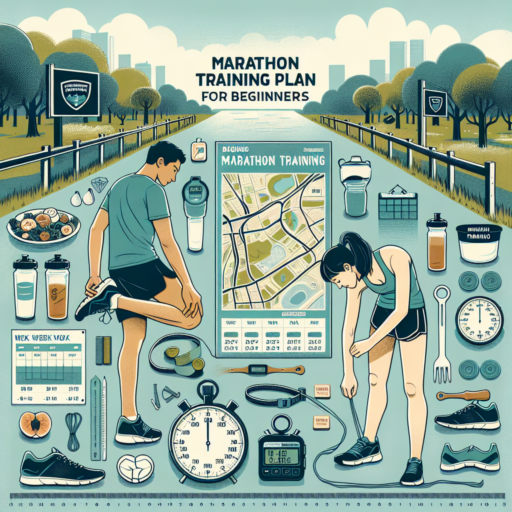How to get from 5K to marathon?
Moving from running a 5K to conquering a marathon is a journey that requires careful planning, dedication, and a strategic approach to training. Transforming your 5K base into marathon readiness involves gradually increasing your distance, enhancing your endurance, and making crucial adjustments to your training regime. It’s a challenge that requires not just physical readiness but a mental commitment as well.
Building Your Distance Slowly but Surely
Transitioning from a 5K distance to a full marathon necessitates a gradual increase in your weekly mileage. It is recommended to follow the 10% rule, which advises not increasing your running distance by more than 10% from one week to the next. This method helps in conditioning your body, avoiding overuse injuries, and steadily boosting your endurance levels without overwhelming your system.
Incorporating Varied Training Workouts
Enhancing your ability to tackle a marathon also involves diversifying your training approach. Include a mix of long runs, interval training, and tempo runs in your routine. Long runs build endurance, interval training boosts your speed and aerobic capacity, whilst tempo runs help in improving your lactate threshold. This variety not only prepares your body for the different demands of a marathon but also keeps your training sessions engaging and prevents burnout.
How many weeks from 5K to marathon?
Transitioning from a 5K to a marathon is a significant leap in endurance and physical challenge. The time it takes to make this jump can vary greatly depending on an individual’s starting point, fitness level, and previous running experience. However, a common guideline for novice to intermediate runners is a gradual preparation spanning 20 to 30 weeks. This timeframe allows for a progressive increase in mileage while incorporating essential rest and recovery periods to prevent injury.
Dedicating enough time for preparation is crucial for successfully moving from running 5 kilometers to completing a marathon. It’s not merely about increasing the distance you can run; it’s also about enhancing your overall physical condition, learning proper nutrition and hydration strategies, and mentally preparing for the demands of marathon running. During this period, it’s advisable to follow a structured training plan that gradually increases long run distances, introduces speed work, and includes cross-training activities to build strength and flexibility.
For runners who have a base of regularly running 5Ks and seek to tackle a marathon, it’s essential to focus on gradually increasing the weekly mileage. An increase of 10% per week is often recommended to allow the body to adapt without the risk of overuse injuries. Incorporating weekly long runs into your training plan is vital, as these runs help build endurance. Additionally, mid-week runs should vary in intensity and purpose, including tempo runs, interval training, and easy recovery jogs.
Can a 5K be considered as a marathon?
Understanding the distinction between a 5K run and a marathon is crucial for both new and experienced runners. While both events are popular in the world of long-distance running, they significantly differ in distance, training requirements, and the physical endurance needed to complete them.
A 5K run spans a distance of 5 kilometers or approximately 3.1 miles. This distance is appealing to a wide range of runners, from beginners looking for an achievable challenge to seasoned athletes seeking to improve their personal best times. The preparation for a 5K race typically involves shorter, more frequent runs and does not demand the extensive time commitment that marathon training requires.
In contrast, a marathon covers a much longer distance of 42.195 kilometers or 26.2 miles. Marathon runners must commit to an intensive training schedule that builds endurance over several months. This significant difference in distance underscores why a 5K cannot technically be considered a marathon. The marathon not only demands more physical stamina but also requires runners to mentally prepare for the challenges of such a long-distance event.
Can you go from couch to marathon in a year?
The journey from couch to marathon in a year might sound ambitious, but it is certainly within the realm of possibility for many aspiring runners. The key to achieving this milestone lies in creating a realistic, structured training plan that gradually increases in intensity and distance, allowing your body the necessary time to adapt and build endurance.
Understanding Your Starting Point
Before embarking on this transformative journey, it’s crucial to assess your current fitness level. This assessment will help tailor a marathon training plan that addresses your specific needs and goals, reducing the risk of injury and ensuring steady progress. Remember, everyone’s starting point is different, and a plan that works for one individual might not be suitable for another.
Building a Solid Foundation
- Start with low-impact exercises to boost your overall fitness and endurance.
- Incorporate regular running sessions, gradually increasing the distance as your body adappts.
- Focus on recovery, ensuring adequate rest days and proper nutrition to fuel your body.
It’s also important to listen to your body throughout the process. Pushing too hard, too quickly can lead to burnout or injury, potentially setting back your progress. With patience, determination, and a well-structured plan, transitioning from a couch to marathon accomplishment in a year is an achievable goal for many.








